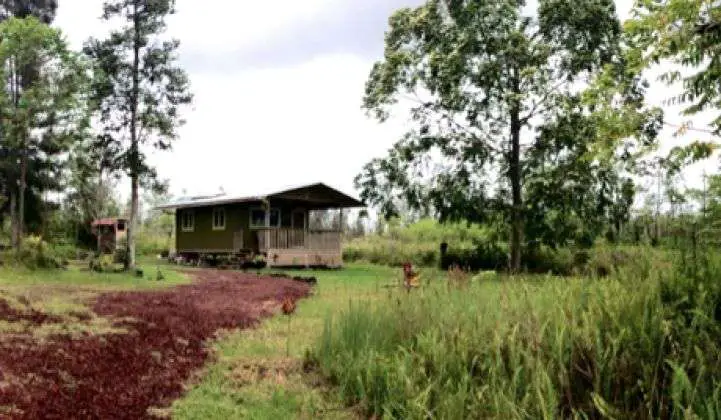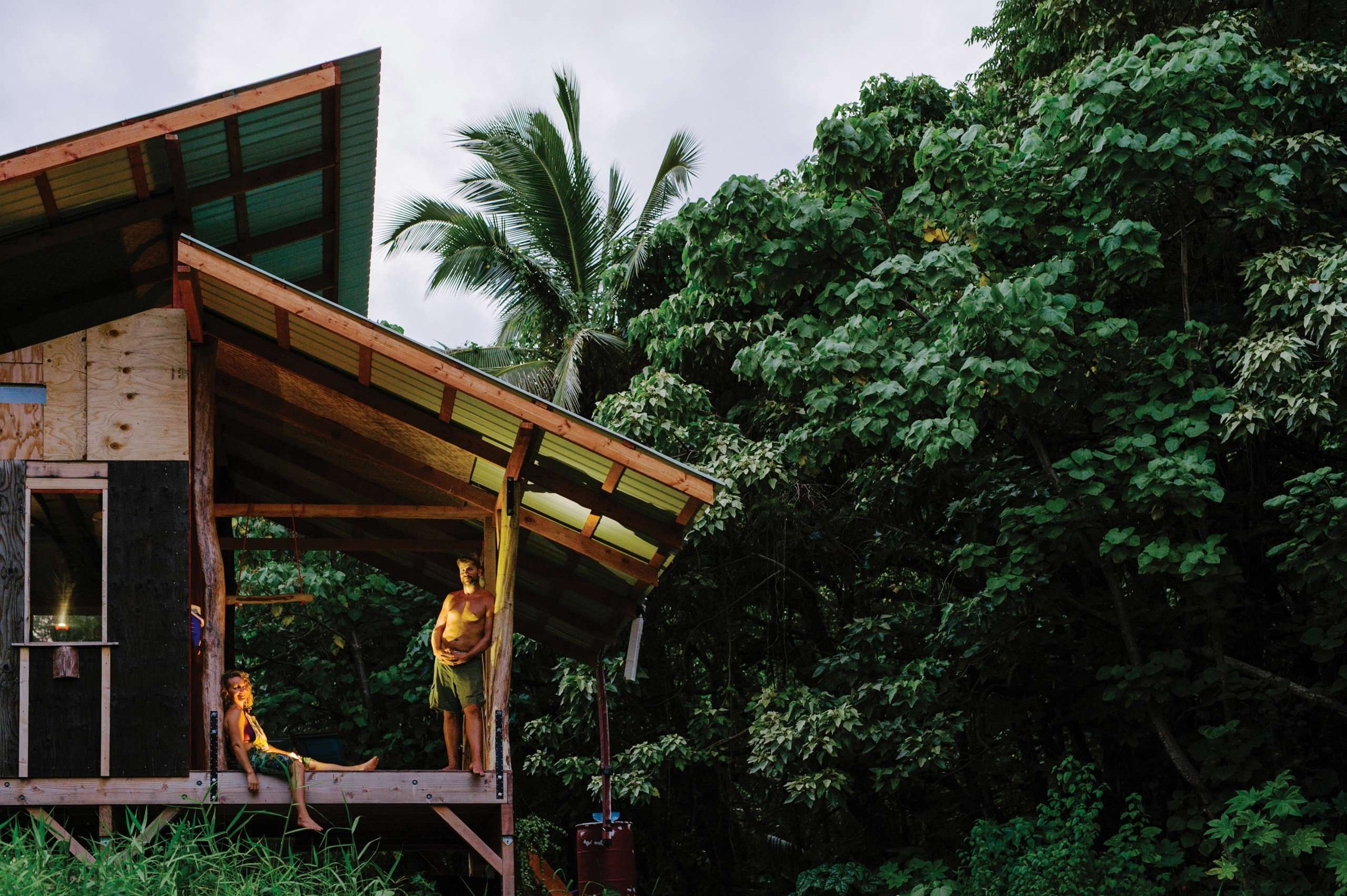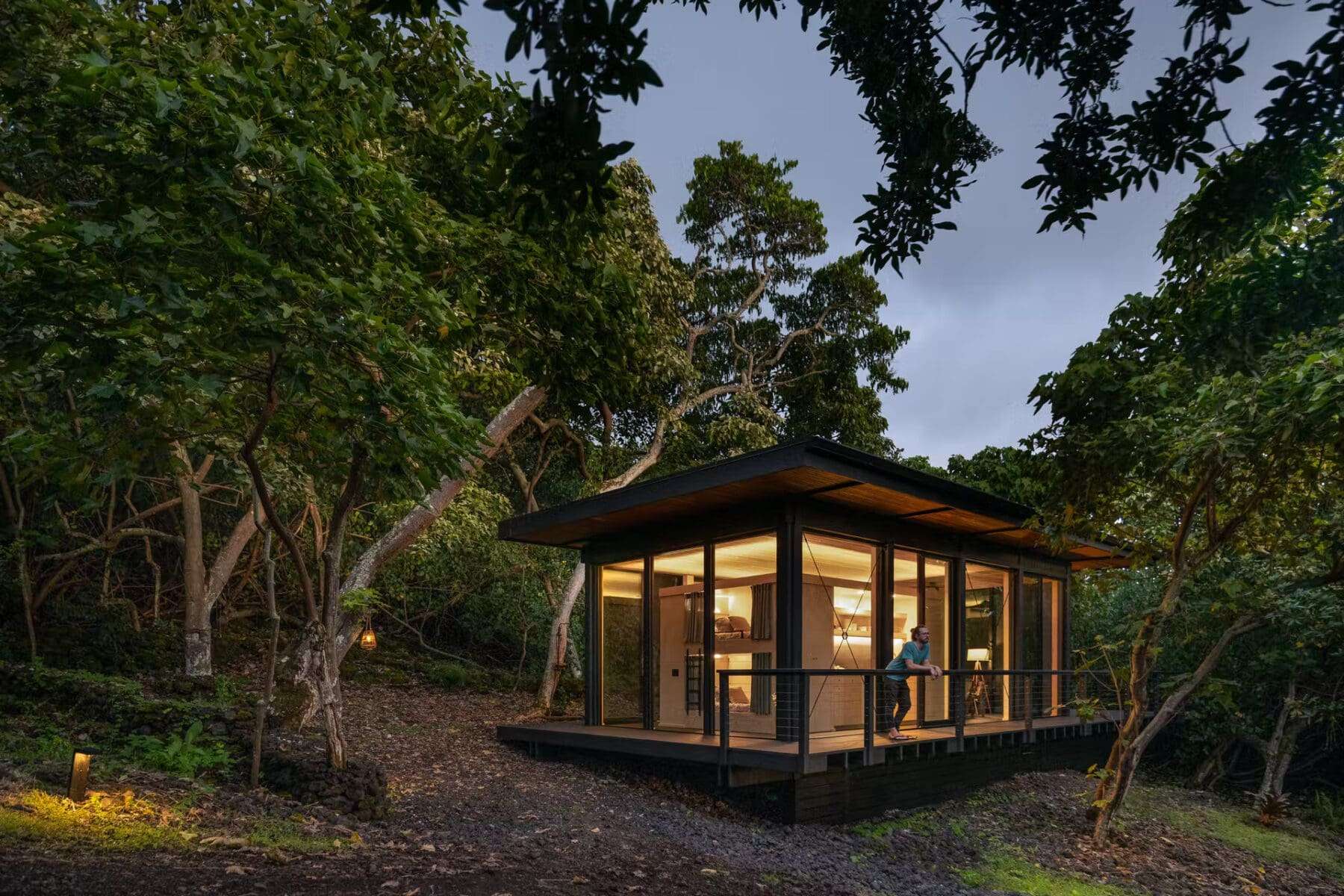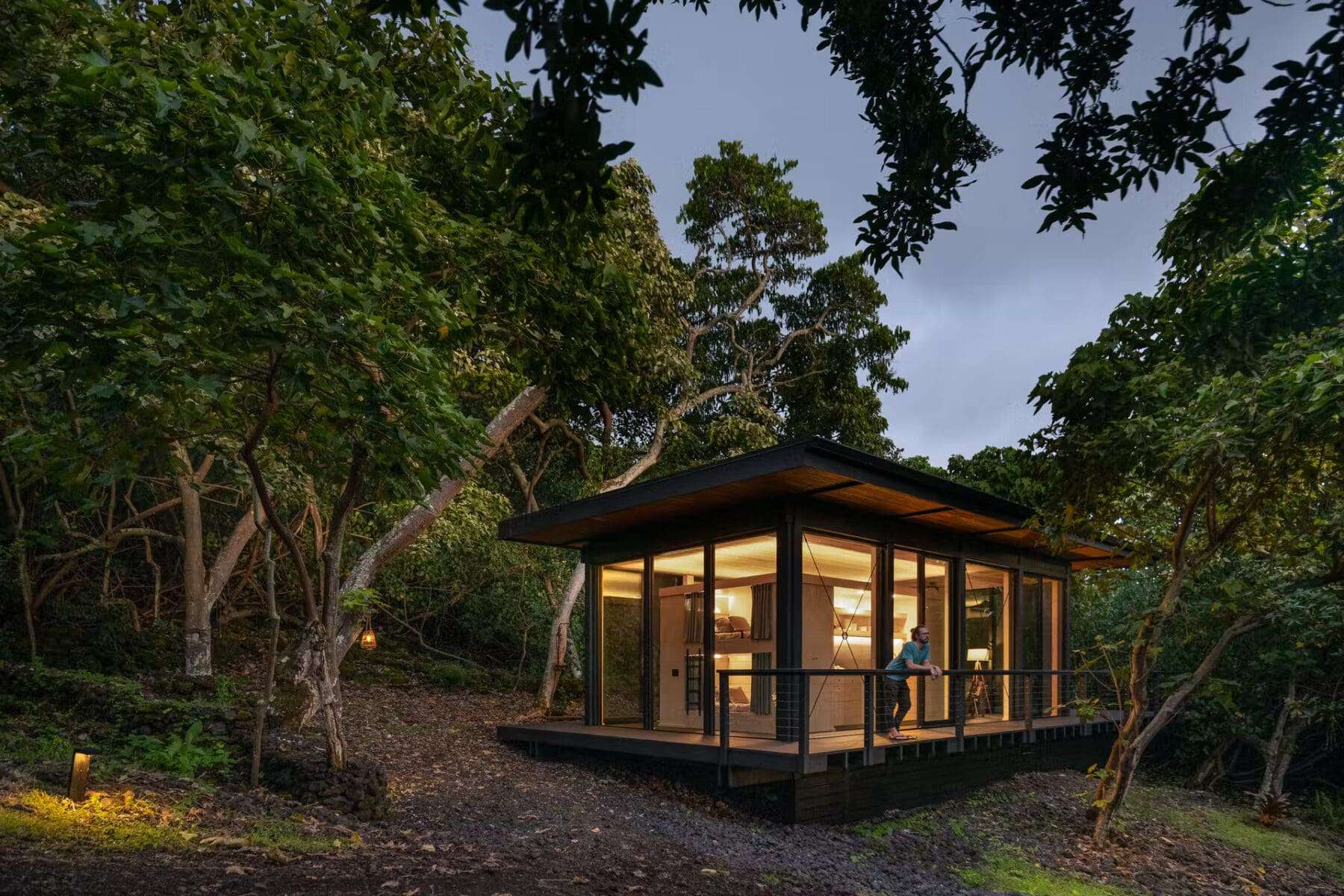If you’re looking for a scenic paradise to embrace off-grid living, Hawaii may appear to be an idyllic choice. However, don’t be fooled by its natural beauty. Off-grid living in the islands comes with its fair share of challenges. The soil in Hawaii is not very fertile, making it difficult to grow crops and sustain a self-sufficient lifestyle. To maximize your chances of success, the southern and central parts of Hawaii County offer the best opportunities for off-grid living. And while the state does have abundant renewable energy sources and a culture of sustainability, the cost of living and property, as well as the constant threat of natural disasters, pose additional hurdles to overcome. If you’re up for the challenge and willing to navigate the high cost of living, limited land availability, and specific regulations, then off-grid living in Hawaii might just be the adventure you’re seeking.

Challenges of Off-Grid Living in Hawaii
Living off-grid in Hawaii can be a dream come true for many people seeking a sustainable and self-sufficient lifestyle. However, it’s important to be aware of the challenges that come with this unique way of living in paradise. From limited fertile soil for agriculture to the high cost of living, there are several obstacles you may face on your off-grid journey in Hawaii.
Limited Fertile Soil for Agriculture
One of the major challenges of off-grid living in Hawaii is the limited availability of fertile soil for agriculture. The volcanic nature of the islands has resulted in a unique but nutrient-poor soil composition. This makes it difficult to grow crops and sustain a self-sufficient lifestyle solely through traditional farming methods.
To overcome this challenge, it’s important to explore alternative gardening techniques that can optimize the use of available soil. Raised bed gardening, container gardening, and hydroponics are some of the options to consider. Additionally, the use of soil amendments such as compost, manure, and organic fertilizers can greatly improve the fertility of the soil and enhance crop growth.
High Cost of Living
Hawaii is notorious for its high cost of living, and this is no exception for off-grid living. The expense of housing, utilities, and groceries can take a toll on your finances and make it challenging to sustain an off-grid lifestyle.
The housing market in Hawaii is particularly expensive, with limited affordable options. If you are considering off-grid living, you may need to invest in constructing or retrofitting your own home, which can be cost-intensive. Additionally, the cost of utilities, such as electricity and water, can be higher when you rely on off-grid systems.
Grocery and consumer goods prices in Hawaii are also generally higher compared to the mainland United States. This is partly due to the geographic isolation of the islands, which leads to increased transportation costs for imported goods. To mitigate the impact of high prices, it’s essential to prioritize self-sufficiency through sustainable agriculture and local food production.
Property Availability and Cost
Finding suitable property for off-grid living in Hawaii can be a challenge due to limited land availability and a competitive real estate market. The desirable locations for off-grid living, such as those with access to natural resources and services, are often in high demand.
Renting or owning property is also a consideration when it comes to off-grid living in Hawaii. Renting may provide more flexibility and require less upfront investment. However, it can be difficult to find rental properties that are suitable for off-grid living and allow for modifications.
Owning property gives you more control over your off-grid setup, but it comes with the responsibility of maintaining and improving the land. It’s important to carefully consider your financial situation and long-term plans before making a decision.
Concerns about Natural Disasters
Living in Hawaii comes with the constant awareness of potential natural disasters, which can pose significant challenges for off-grid systems. The islands are susceptible to hurricanes, volcanic activity, and lava flow, among other natural events.
Hurricanes can cause power outages and damage to off-grid systems, especially if they rely on solar panels or wind turbines. Adequate preparation, including backup power sources and strong infrastructure, is crucial to ensure the resilience of your off-grid setup.
Volcanic activity and lava flow are specific concerns for certain areas of Hawaii. While volcanic activity can provide geothermal energy opportunities, it also poses risks to nearby communities. Understanding the history and patterns of volcanic activity in the area you choose for off-grid living is essential to make informed decisions.
Having a comprehensive disaster preparedness plan is vital for off-grid living in Hawaii. This includes having emergency supplies, evacuation plans, and staying updated with local authorities and warnings.
Off-Grid Opportunities in Hawaii County
Hawaii County offers some of the best opportunities for off-grid living in the state, particularly in the southern and central parts. These regions provide access to resources and services that are essential for a sustainable off-grid lifestyle.
In southern Hawaii County, areas such as Puna and Kau offer a rural setting with abundant natural resources. The tropical climate and fertile soil make it possible to have successful off-grid agriculture. Additionally, the region has a thriving off-grid community and various initiatives that promote sustainable living.
Central Hawaii County, including areas like Hilo and Hamakua, provides a combination of rural and urban amenities necessary for off-grid living. These regions offer access to essential services, such as hospitals, schools, and stores, while still maintaining a connection with nature.
Availability of resources, such as water and timber, and access to farmers markets and local food sources make Hawaii County an attractive option for off-grid enthusiasts.

Off-Grid Opportunities in Maui
Maui, known for its stunning landscapes and idyllic beaches, also offers opportunities for off-grid living. The island has a range of resources and infrastructure that support a sustainable lifestyle.
The natural environment of Maui provides access to renewable energy sources, including solar and wind energy. This makes it possible to generate off-grid power for homes and communities. Additionally, the island has several off-grid communities and initiatives that foster a sense of community and collaboration among residents.
Exploring Maui’s off-grid opportunities can lead to a balanced lifestyle where you can enjoy the island’s natural beauty while reducing your carbon footprint.
Off-Grid Opportunities in Kauai
Kauai, known as the “Garden Isle,” boasts a natural environment and a strong community-driven support system that make it an attractive location for off-grid living.
The island’s lush landscapes and abundant resources, such as tropical fruits and fresh water, provide ample opportunities for self-sufficiency through agriculture and sustainable living practices.
Kauai’s supportive community network encourages off-grid living initiatives and promotes the sharing of knowledge and resources among residents. By embracing the collaborative spirit of the island, you can establish meaningful connections and find support in your off-grid journey.
Off-Grid Opportunities in Honolulu County
While Honolulu County may seem like an unlikely place for off-grid living due to its urban nature, there are still opportunities for sustainable and self-sufficient lifestyles in this bustling area.
Urban challenges, such as limited space and high population density, can be addressed through innovative solutions. Alternative energy initiatives, such as solar power and energy-efficient systems, can help urban residents achieve off-grid living. Additionally, the availability of support networks and resources in the city make it easier to transition to an off-grid lifestyle.
Embracing the urban challenges and seeking out off-grid opportunities in Honolulu County can lead to a fulfilling and sustainable life in the heart of Hawaii.
Abundant Renewable Energy Sources
One of the major advantages of off-grid living in Hawaii is the abundance of renewable energy sources. The islands have exceptional potential for harnessing solar, wind, and geothermal energy.
Hawaii’s abundant sunshine makes solar energy an excellent choice for powering off-grid homes and communities. With advancements in solar technology and battery storage, it’s now possible to generate and store sufficient energy for day and night usage.
Moreover, the islands experience consistent trade winds, making wind energy a viable option for off-grid living. Wind turbines can be integrated into off-grid systems to reduce reliance on other energy sources.
Some areas of Hawaii also have access to geothermal energy, which harnesses the heat from volcanic activity. This renewable energy source can provide a consistent and sustainable power supply for off-grid living.
By utilizing these abundant renewable energy sources, you can reduce your carbon footprint and achieve a self-sufficient lifestyle in Hawaii.

Culture of Sustainability and Support
Hawaii has a longstanding culture of sustainability and support for off-grid living. The state’s unique environment, surrounded by vast oceans and fragile ecosystems, has fostered an environmental consciousness among its residents.
Government initiatives and incentives further promote sustainable living practices and encourage the adoption of off-grid systems. These initiatives include tax incentives for renewable energy installations, community-led sustainability programs, and educational campaigns to raise awareness about the importance of conservation.
Community networks and resources play a vital role in supporting off-grid living in Hawaii. Local organizations, farmers markets, and workshops provide opportunities to connect with like-minded individuals and gain knowledge about sustainable living practices. The sense of community and shared values make Hawaii an ideal place to embark on the off-grid journey.
In conclusion, off-grid living in Hawaii offers a unique blend of challenges and opportunities. Limited fertile soil, high cost of living, property availability, and concerns about natural disasters are some of the obstacles you may encounter. However, the state’s abundant renewable energy sources, culture of sustainability, and support for off-grid living make it an attractive destination for those seeking a sustainable and self-sufficient lifestyle. By exploring the off-grid opportunities in Hawaii County, Maui, Kauai, and Honolulu County, you can find the perfect balance between paradise and self-sufficiency.




